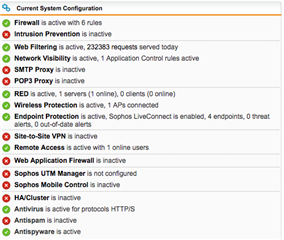Hi everyone,
I have had an issue with IE on all computers behind our Sophos UTM box for over 2 years now. We simply accepted the issue and moved on. The issue is, when browsing to a webpage, IE takes forever to load! This issue doesn't affect any other browser but our tools require Active X's to work so we are forced to use IE. I have tried:
Turning off IPS
Turning off Web Protection
Turning off Application Control
Creating QOS Rules
Resetting winsock on our PCs
And many more things!
I've looked at every log possible and I cant seem to figure it out. Sophos has alot of great features, alot of which we use but this issue is starting to get worse and is going to force us to go with another vendor. The workstations we use vary from Win7 to Win8. Sometimes they have the issue, sometimes they don't.
We currently run IPS, Web Protection, Application Control.
IPS has never been messed with besides adding our networks
Web Protection has never been messed with. Runs in Transparent mode with no authentication and doesn't block on authentication fail
Application Control has been turned on and blocks windows updates (windows updates break our tools)
We also use the sophos AV included with the UTM. We keep the UTM up to date, 9.411-3 running right now.
I'm begging for help! I cant seem to find the issue!
Thanks
Brandon
This thread was automatically locked due to age.




